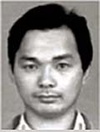その2を読む >>
437人が拷問死、行方不明=大事な役割担った日系活動家
「軍事クーデター50年・独裁政治の撲滅を」式典の直前には、拷問の死者や行方不明者を役者が演じ、まるで死後の世界からメッセージを送っているかのような映像が20人分ほど流され、来場者は食い入るように見入った。その最後の方には日系活動家4人分も映し出された。
その一人、フランシスコ・セイコ・オクマさん(ALN)は警官隊との打ち合いで73年3月15日に聖市で死亡した。彼の検死報告書にはテロリストを意味する “T” の字が書かれていた。
その役を演じた亀田エジソンさん(56、バストス出身二世)は、「オクマは11歳年上。彼が死んだ時、僕はまだ15歳だった。彼らがやらなかったら僕らがやっていた。軍政に立ち向かった彼らの勇気を誇りに感じる」と語った。「バストスも戦争中、バルガス政権により厳しい目に遭った。僕らはブラジル人として政府にただ従うのでなく、悪いものは悪いと言わなくちゃいけない」と断言した。
平田進下議の親族で、当時の聖市金属労組の5大指導者の一人で、3週間にわたる拷問の末に殺された「平田ルイス」役をした三浦マルコスさん(40、モジ出身三世)も「この件は日系家族の中ではタブーにされてきた。歴史を掘り起こし、民主化に貢献した若者として表立って語るべきだ」との想いをぶちまけた。
隠れキリシタンの家系でもあり、平田は最後まで信念を曲げなかったようだ。その結果、検死報告書には「逃げようとしてバスにはねられて死亡」と書かれたが、同房者の証言により拷問死が明らかにされている。
軍政の人権侵害を調査する聖州真相究明委員会のアドリアノ・ジョーゴ州議本人もここで拷問を受けた一人だ。「日系人には恥の文化があり、それが邪魔して遺族から協力が得られない。大事な役割を果たした自分達の息子や娘が、軍政からどう扱われたかをしっかりと見つめ、再び同じ悲劇が起きないように監視する役割が我々にはある」と強調し、「日系活動家に焦点を当てた公聴会を開きたい。日系の若者達にもっと感心を持って欲しい。コロニアの協力をお願いしたい」と呼びかけた。
そんな活動家を当時の日系社会は「テロリスト」と認識していた。人文研年表にも《1973年3月15日、外間盛康を含むALNのテロ・グループ3人がペニャ街で軍警と打ち合い射殺される》と枕詞のように関連事件に「テロ」と付けている。三宅さんにも尋ねたが「親や兄弟は私の活動を全く理解してくれなかった」と悲しそうな表情を浮かべた。
安部下議も「軍事政権でも、誰でも間違っていたら糺さなければいけない。どんな良いものも20年もやれば腐敗する。軍政はダムや通信設備などインフラ整備には投資したが、教育には力を入れなかったからダメになった。外資導入に編重した政策が80年代の高インフレの原因となり、それが農業界を苦しめてコチアや南伯農協の崩壊につながり、デカセギブームを起こした」と分析し、つながりを総括した。
* * * * *
軍政開始50年の式典の宣言文には《軍政21年間の間に7万人以上の市民が追跡・拘束され、少なくとも437人が死亡・行方不明にされた》とあり、この会場横のDOI―Codi建物だけで《8千人が拷問され、50人以上が殺された》と明らかにした。それらの中に少なくとも40人の日系の若者がいた。
その彼らのレジスタンス(抵抗)運動が、後の民政移管の端緒となった。冷静な目で、コロニアからもあの時代を見直す時期ではないか。
※ 本稿はブラジルの邦字紙『ニッケイ新聞』(2014年4月9日)から、許可を持って転載しています。
© 2014 Nikkey Shimbun







